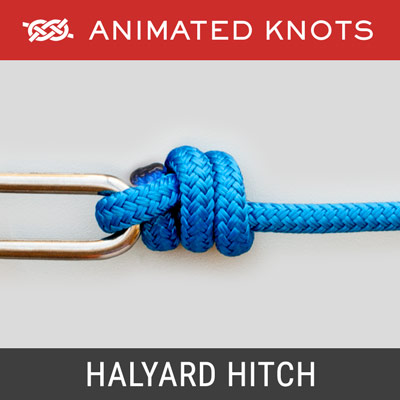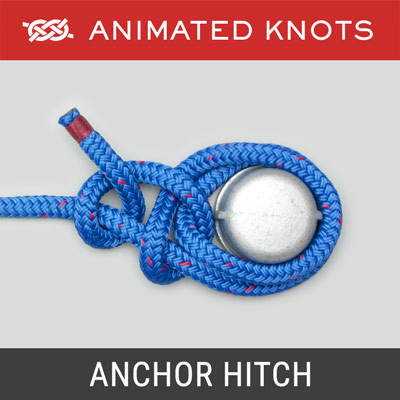I’m proud of knowing how to tie a proper cleat hitch, clove, and bowline. It’s not that difficult of a skill to have, yet it’s surprising how few possess it as evident by walking the docks. If it’s such a common problem, why do you rarely see fenders floating in marinas or boats coming off their mooring or sails flogging from halyards coming undone? It leads me to wonder what knots are essential, what are nice to haves, and which ones are just yachty people doing yachty things?
If you’re not too concerned about the ease of untying the knot, “tying a lot” is a viable alternative. So which knots do you think are essential?
I’ll throw a strange one out there to start, the prusik. I didn’t even know about it until my wife and I started climbing a few years ago. It never came up in the sailing books I read or bumming around on other people’s boats, but it proved to be invaluable last year.
We were short taking to an anchorage for the day and this was going to be the last tack before furling the sail. A new guest was eager to get the sheet pulled in, I wasn’t paying attention to what she was doing and I hadn’t explained the importance of avoiding an override. Before I knew it, we had a gnarly override, the sail was loaded, and we were on a course to run into our anchorage at 7 knots. Thankfully, I had purchased a few prusik loops to test out climbing the mast a few months before which made it even easier. We were able to run a spare line through a snatch block to the other primary winch and attach it to a prusik tied a few feet ahead of the overridden winch. With a few turns of the second primary winch, the load was relieved, and the override was easily removed. I can’t think of another knot that would have done a better job and I don’t think “tying a lot” would have provided enough friction to take the load.
So, what knots do you think are essential?
If you’re not too concerned about the ease of untying the knot, “tying a lot” is a viable alternative. So which knots do you think are essential?
I’ll throw a strange one out there to start, the prusik. I didn’t even know about it until my wife and I started climbing a few years ago. It never came up in the sailing books I read or bumming around on other people’s boats, but it proved to be invaluable last year.
We were short taking to an anchorage for the day and this was going to be the last tack before furling the sail. A new guest was eager to get the sheet pulled in, I wasn’t paying attention to what she was doing and I hadn’t explained the importance of avoiding an override. Before I knew it, we had a gnarly override, the sail was loaded, and we were on a course to run into our anchorage at 7 knots. Thankfully, I had purchased a few prusik loops to test out climbing the mast a few months before which made it even easier. We were able to run a spare line through a snatch block to the other primary winch and attach it to a prusik tied a few feet ahead of the overridden winch. With a few turns of the second primary winch, the load was relieved, and the override was easily removed. I can’t think of another knot that would have done a better job and I don’t think “tying a lot” would have provided enough friction to take the load.
So, what knots do you think are essential?



